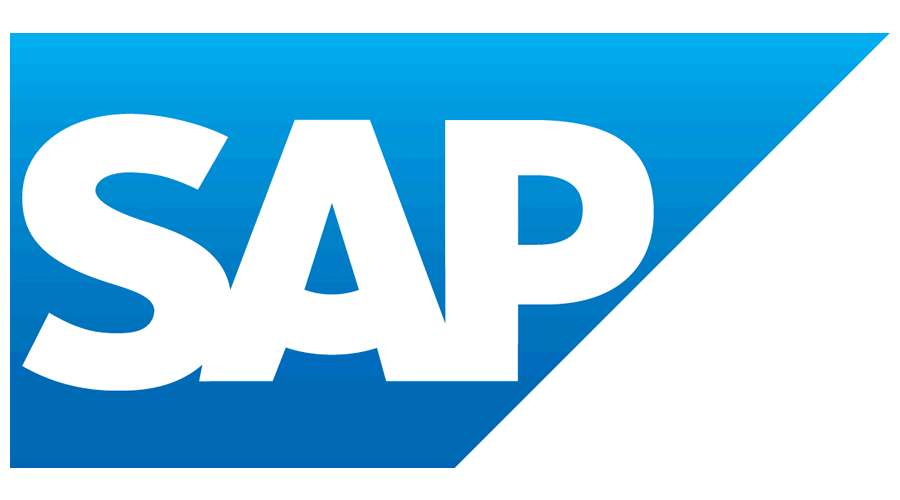
In our rapidly evolving digital landscape, software has seamlessly woven itself into the fabric of our daily lives. From the tools that boost our productivity to the immersive entertainment applications that whisk us away to far-off realms, we’ve become reliant on software to orchestrate an array of tasks. While the open source software movement has gained widespread recognition for its ethos of transparency and collaborative innovation, it’s crucial to remember that closed source software, shrouded in proprietary code and boasting distinctive features, maintains a resilient presence in our tech-driven world.
Today, we embark on a journey to unveil a carefully curated selection of the top 12 closed source software gems, each leaving an indelible mark on various domains. These digital fortresses, though cloaked in secrecy, have significantly shaped our digital experiences and continue to play pivotal roles in diverse industries. Let’s venture forth to explore these enigmatic digital companions that silently power our modern lives.
What is closed source software?
Closed source software, often referred to as proprietary software, represents a class of computer programs characterized by their closely guarded source code, which remains veiled from the prying eyes of the public. Unlike their open source counterparts, where the code is an open book, closed source software conceals its programming intricacies, granting access solely to the compiled, ready-to-use version.
Typically, closed source software emerges from the creative crucible of specific companies or organizations, granting them absolute dominion over its evolution, distribution, and licensing terms. Users venturing into the realm of closed source software usually find themselves navigating a landscape of licenses and subscriptions, necessitating financial commitments for legitimate usage. Regrettably, this exclusivity also entails a lack of liberty to inspect, modify, or share the underlying code.
While closed source software excels in areas such as quality control, professional support, and safeguarding intellectual property, it casts a shadow on the ideals of transparency and user adaptability, which are championed by open source alternatives. This unique digital realm of opacity, though laden with benefits, can limit the vistas of exploration and customization cherished by open source enthusiasts.
Benefits of Closed Source software
Certainly! Here are some unique benefits of closed source software:
1. Enhanced Security: Closed source software often undergoes rigorous testing and security assessments by dedicated teams. Since the source code is not publicly available, potential vulnerabilities are less likely to be exploited by malicious actors. This can be especially crucial for sensitive applications, like banking software or medical systems.
2. Stability and Reliability: Closed source software is typically well-documented and thoroughly tested, leading to greater stability and reliability. Users can expect a consistent experience with fewer unexpected errors or crashes.
3. Comprehensive Support: Closed source software vendors often provide robust customer support, including help desks, forums, and dedicated teams to address user issues promptly. This level of support can be invaluable for businesses relying on critical software applications.
4. Integration and Compatibility: Many closed source software products are designed to seamlessly integrate with other proprietary solutions from the same vendor, ensuring compatibility and ease of use. This can streamline workflows and improve efficiency for organizations.
5. Advanced Features: Companies investing in closed source software often have the resources to develop and maintain advanced features that cater to specific industries or needs. Users can benefit from cutting-edge technologies and functionalities.
6. Legal Protections: Closed source software typically comes with legally binding agreements, including End-User License Agreements (EULAs). These agreements can protect both the software vendor and the user, outlining rights, responsibilities, and restrictions clearly.
7. Intellectual Property Safeguarding: Closed source software safeguards the intellectual property of the developers. This encourages innovation and investment in software development by ensuring that the developers can profit from their creations.
8. Monetization Opportunities: For software developers and companies, closed source software provides a means to monetize their products through licensing fees, subscriptions, and sales. This revenue can be reinvested in improving and expanding the software.
9. Customization Control: Closed source software can be tailored to meet specific business needs through customization services provided by the software vendor. This enables organizations to have software that aligns precisely with their requirements.
10. Market Competitiveness: In competitive markets, closed source software vendors strive to outperform rivals by continuously enhancing their products. This competition can lead to faster innovation and improved software quality.
11. Confidentiality Assurance: Businesses dealing with sensitive data can benefit from closed source software’s confidentiality assurance. With the source code kept secret, the risk of data leaks due to code exposure is minimized.
12. Faster Time-to-Market: Closed source software is often developed with specific market demands in mind, which can lead to faster time-to-market compared to open source solutions that may require more community-driven development cycles.

bud!
1. Microsoft Windows

Microsoft Windows, the enduring titan of personal computing, has wielded its influence for decades. Revered for its intuitive interface and broad software compatibility, Windows has fundamentally defined our digital interactions. With iterations like Windows 10 and the sleek Windows 11, Microsoft persists in enhancing its proprietary OS, guiding our technological journey.
2. Adobe Photoshop

AutoCAD, the brainchild of Autodesk, stands as a beacon in the CAD realm. Its closed source prowess has fundamentally transformed how architects, engineers, and designers craft intricate 2D and 3D renderings. A quintessential tool, AutoCAD fuels precision and innovation in the world of design.
3. AutoCAD

AutoCAD, an Autodesk masterpiece, stands as the vanguard of CAD innovation. This closed-source gem is the linchpin for architects, engineers, and designers, sculpting meticulous 2D and 3D masterpieces. A digital chisel in their hands, it reshapes the very landscape of design and engineering.
4. Oracle Database

Oracle Database, a formidable closed-source RDBMS from Oracle Corporation, serves as the bedrock for enterprise data storage, management, and fortification. Its influence extends across sectors like finance, healthcare, and e-commerce, where data integrity and reliability are paramount. A pivotal asset, it safeguards the lifeblood of diverse industries.
5. Adobe Illustrator

Adobe Illustrator is another gem from Adobe’s closed source software collection, designed for vector graphic creation. It is a go-to tool for artists and designers working on illustrations, logos, and scalable graphics.
6. Final Cut Pro

Final Cut Pro is a closed source video editing software exclusively available for macOS. It has earned its place among professional video editors for its robust features, high-quality output, and seamless integration with Apple hardware.
7. MATLAB

MATLAB, the enigmatic closed-source realm, orchestrates brilliance in engineering, science, and mathematics. Within its coded tapestry, it weaves data analysis, algorithm incubation, and numerical wizardry. In the hands of researchers and academics, it metamorphoses data into insight, a trusted ally in the quest for knowledge and innovation.
8. VMware

VMware offers a suite of virtualization products that enable businesses to optimize their IT infrastructure. Its closed source solutions enhance server and desktop virtualization, aiding in cost reduction and efficient resource management.
9. SolidWorks

SolidWorks, a product of Dassault Systemes, is closed source software tailored for 3D mechanical design and engineering. It empowers product designers and engineers to bring innovative concepts to life. As stated in this article, you can browse your selection of available deals on smartphones and top brands and explore the cell phone service plans that best suit your needs.
10. SAP ERP

SAP Enterprise Resource Planning (ERP) software is closed source and helps organizations manage their business operations efficiently. It integrates various functions like finance, supply chain, and human resources.
11. IBM SPSS Statistics

IBM SPSS Statistics is a closed source statistical analysis software used in research, social sciences, and business analytics. It provides advanced data analysis tools and predictive modeling capabilities.
12. McAfee Antivirus

McAfee Antivirus is a closed source security software designed to protect computers and networks from malware, viruses, and cyber threats. It offers real-time protection and threat detection.
Certainly, here are the pros and cons of closed source software:
Pros of Closed Source Software:
1. Enhanced Security: Closed source software is less vulnerable to security breaches because the source code is not publicly available. This can be especially important for applications handling sensitive data.
2. Stability and Reliability: Closed source software is typically well-tested and stable, with fewer bugs and crashes, providing a consistent user experience.
3. Comprehensive Support: Vendors of closed source software often offer robust customer support, including help desks, forums, and dedicated teams to assist users promptly.
4. Integration and Compatibility: Closed source software from the same vendor is often designed to seamlessly integrate with other proprietary solutions, ensuring compatibility and streamlining workflows.
5. Advanced Features: Closed source software often includes advanced features and functionalities that cater to specific industries or user needs, offering cutting-edge technology.
6. Legal Protections: Closed source software comes with legally binding agreements, such as End-User License Agreements (EULAs), that outline rights, responsibilities, and restrictions clearly, providing legal protection.
7. Intellectual Property Safeguarding: Closed source software protects the intellectual property of developers, encouraging innovation and investment in software development.
8. Monetization Opportunities: Developers and companies can monetize closed source software through licensing fees, subscriptions, and sales, generating revenue for further development.

bud!
Cons of Closed Source Software:
1. Lack of Transparency: Users cannot view or modify the source code of closed source software, limiting transparency and making it difficult to identify potential vulnerabilities or customize the software.
2. Vendor Lock-In: Users of closed source software may become dependent on a single vendor for updates, bug fixes, and support, potentially leading to vendor lock-in and reduced flexibility.
3. Cost: Closed source software often comes with licensing fees, which can be expensive for businesses, especially when compared to free or open source alternatives.
4. Limited Customization: Customizing closed source software can be challenging and costly, as it typically requires working closely with the vendor, and not all modifications may be feasible.
5. Inflexible Licensing: Closed source software licenses may come with restrictions on how the software can be used, limiting flexibility for users and organizations.
6. Dependency on Vendor: Users are reliant on the vendor’s development roadmap and priorities, which may not align with their specific needs or timelines.
7. Limited Community Input: Closed source software development lacks the collaborative input and transparency of open source projects, which can result in slower innovation and less community involvement.
8. Potential Abandonment: If a vendor discontinues support or development for a closed source product, users may face challenges in finding suitable replacements or migrating to other solutions.
Deciding between closed and open source software hinges on individual or organizational needs. Closed source ensures security, stability, and support but restricts customization and transparency. Achieving equilibrium demands thoughtful evaluation, aligning software choice with precise objectives, and balancing the scales between security and adaptability.
Conclusion
Closed source software, with its proprietary code and unique features, continues to shape our digital landscape. The top 12 closed source software applications discussed in this blog cater to a wide range of needs, from operating systems to creative design, data analysis, and security. While open source alternatives exist for many of these applications, the closed source options often excel in terms of user-friendliness, professional-grade features, and industry-specific functionalities. As technology continues to evolve, these closed source software products will likely adapt and innovate, maintaining their relevance in the digital world.

